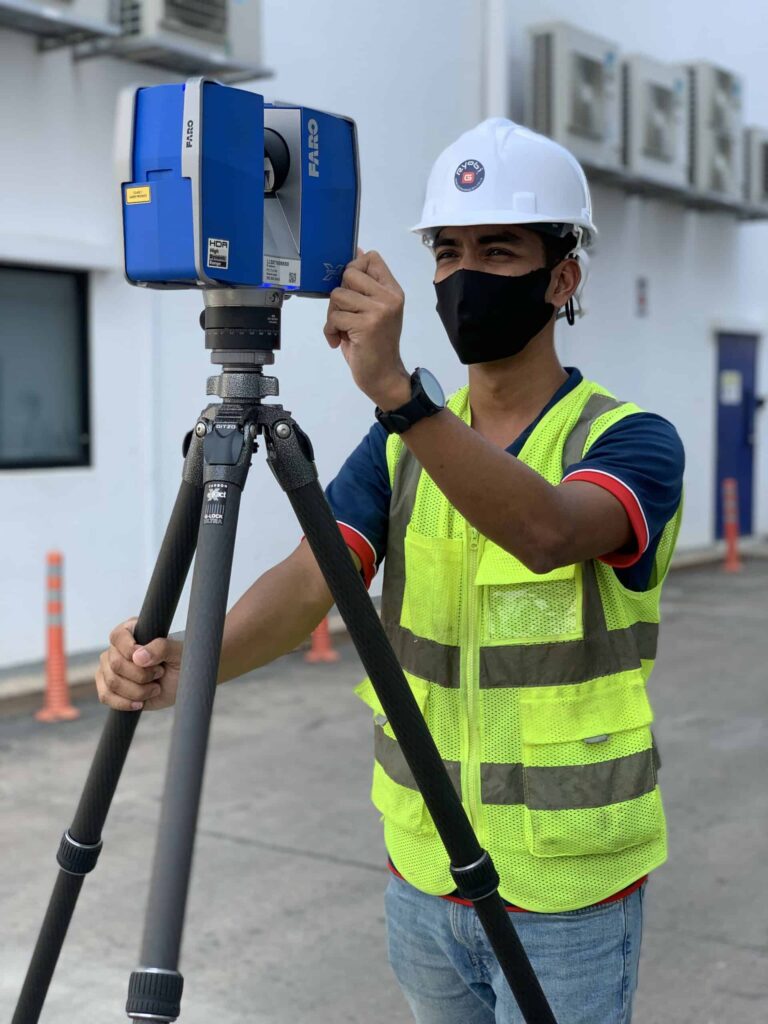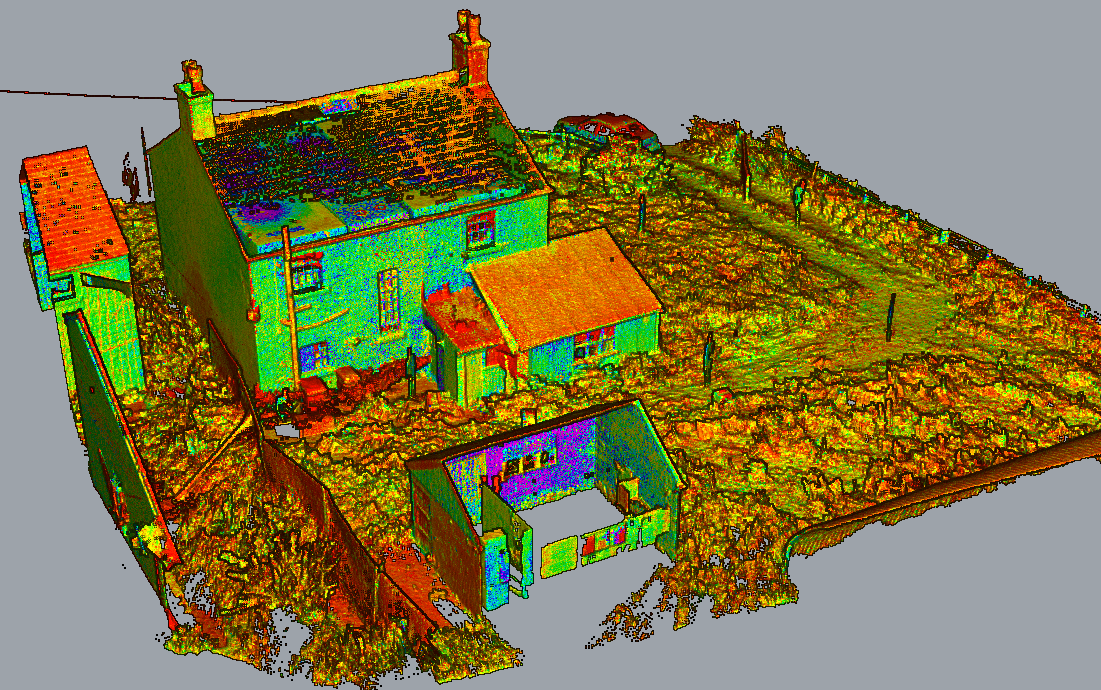Just How 3D Laser Scanning Revolutionizes Architectural Layout and Construction Projects
3D laser scanning is transforming the landscape of architectural style and construction. This technology supplies unequaled precision in recording existing environments, which helps with better task planning and execution. It decreases mistakes while enhancing effectiveness in various stages of growth. The ramifications for collaboration among engineers, engineers, and other stakeholders are substantial. These developments open up the door to new style opportunities and innovative services. What exists ahead for this advancing technology?
The Basics of 3D Laser Scanning Modern Technology
Although 3D laser scanning innovation might appear complex, its core concepts are transformative and simple for building design. This innovation employs laser beam of lights to capture exact dimensions of physical frameworks, creating a detailed point cloud that represents the scanned environment. A laser scanner sends out rapid pulses of light, measuring the time it takes for the light to return, which enables the calculation of distances with remarkable accuracy.
The resulting factor cloud can be exchanged a 3D version, giving engineers with invaluable visual data. This model enables experts to control and assess layout components within their jobs, enabling ingenious options and improved visualization. By utilizing 3D laser scanning, designers can better comprehend the existing conditions of a website, ensuring that new styles balance with their environments. This assimilation of technology into architectural style marks a significant advancement, fostering creativity and accuracy in the field.

Enhancing Accuracy and Performance in Architectural Projects
As architectural projects progressively demand accuracy and rate, 3D laser scanning emerges as an essential device in boosting both accuracy and efficiency. This modern technology captures numerous data factors in a short timeframe, producing specific and in-depth 3D designs of existing frameworks. The capacity to get exact dimensions lowers the threat of mistakes throughout the layout stage, permitting engineers to envision their projects with unequaled quality.
The rapid data collection procedure lessens the time spent on-site, enabling groups to concentrate on evaluation and style enhancements. With real-time data availability, modifications can be made quickly, advertising an extra streamlined process. The combination of 3D laser scanning into building techniques not only improves dimension accuracy but additionally improves the total project timeline, helping with quicker decision-making. In an industry where precision is vital, this innovation stands as a transformative pressure, boosting the requirements of architectural layout and building jobs.
Simplifying Collaboration Amongst Stakeholders
While standard architectural procedures typically involve fragmented interaction amongst stakeholders, 3D laser scanning promotes a much more natural joint setting. By supplying exact, high-resolution data, this modern technology permits architects, service providers, designers, and clients to run from a unified point of recommendation. The in-depth visualizations generated via laser scanning eliminate misinterpretations and ambiguities, ensuring that all celebrations have access to the same details.
This openness enhances decision-making and encourages prompt responses, as stakeholders can quickly picture design elements and spatial connections. On top of that, the assimilation of 3D scanning information into Building Info Modeling (BIM) systems further enhances cooperation, enabling real-time updates and alterations. Such seamless communication not only minimizes problems however likewise speeds up job check this timelines, as all stakeholders remain lined up throughout the style and construction phases. Ultimately, 3D laser scanning changes typical process into a more effective and collective process, benefiting all parties included.
Opening Innovative Possibilities in Design
By enabling architects to picture complicated detailed details and spatial relationships, 3D laser scanning reveals innovative opportunities in design. This technology permits for accurate mapping of existing settings, allowing architects to explore ingenious concepts that may have previously appeared not practical. With very precise information, designers can trying out unusual forms and materials, pushing the borders of standard architecture.
Furthermore, the combination of 3D laser scanning right into the design process cultivates partnership amongst multidisciplinary teams, urging the exchange of ideas and boosting imagination. The thorough visualizations generated by this technology not just aid in identifying potential style challenges but additionally influence services that could not have actually been taken into consideration. As a result, designers can create much more appealing and vibrant areas that reverberate with users while fulfilling practical requirements. Ultimately, 3D laser scanning transforms the architectural landscape, encouraging designers to understand their visions with unmatched accuracy and creative thinking.
The Future of 3D Laser Scanning in Architecture and Construction
The assimilation of 3D laser scanning into building design not only boosts creativity however additionally sets the stage for its progressing role in the future of style and building. As innovation advances, the accuracy and performance of laser scanning will continue to boost, enabling engineers and building contractors to create recommended you read more intricate designs with precision - 3D Scanning. The usage of this technology in real-time information collection will promote much better decision-making, decreasing mistakes and improving workflows
Future applications might consist of augmented and virtual truth combinations, permitting stakeholders to envision projects in immersive settings. Additionally, as sustainability comes to be a top priority, 3D laser scanning will support the growth of energy-efficient designs by providing comprehensive understandings into existing frameworks. As cooperation among numerous disciplines comes to be even more crucial, the ability to share specific 3D models will certainly foster innovation and boost job outcomes. Ultimately, 3D laser scanning will certainly redefine criteria in building layout and building techniques.
Often Asked Inquiries
What Is the Expense of Executing 3D Laser Scanning Modern Technology?

The length of time Does a Regular 3D Laser Scanning Project Take?
A typical 3D laser scanning task can take anywhere from a couple of hours to click this site a number of days, depending upon variables such as the project's dimension, complexity, and the level of detail required for exact information capture.
What Kinds Of Projects Advantage A Lot Of From 3D Laser Scanning?
3D laser scanning benefits various tasks, specifically large-scale building and constructions, historic repairs, and complicated remodellings. It enhances precision in measurements, lowers errors, and offers detailed information necessary for effective planning and execution in building design and construction.

Exist Details Software Programs Required for 3D Laser Scans?
Yes, particular software application programs are essential for processing 3D laser scans. 3D Scanning. Popular choices include Autodesk ReCap, Faro Scene, and Leica Cyclone, each offering distinct attributes customized for analyzing and imagining scanned data efficiently in different jobs
Just How Does 3D Laser Scanning Influence Environmental Sustainability in Construction?
3D laser scanning enhances ecological sustainability in construction by decreasing material waste, allowing specific dimensions, and advertising reliable source usage. This technology permits much better planning, decreasing the ecological footprint of building projects through improved accuracy and performance.
3D laser scanning is changing the landscape of building style and construction. 3D laser scanning innovation might appear complicated, its core principles are straightforward and transformative for architectural design. By making it possible for designers to imagine complicated spatial connections and detailed information, 3D laser scanning reveals creative opportunities in style. The assimilation of 3D laser scanning into the design process fosters partnership among multidisciplinary groups, motivating the exchange of concepts and enhancing creative thinking. The combination of 3D laser scanning right into architectural design not just enhances creative thinking yet additionally establishes the phase for its developing function in the future of style and construction.